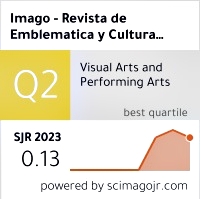La celda del Padre Salamanca en el Convento de la Merced de Cuzco. Guía conceptual de la vida religiosa mercedaria en el altiplano peruano del setecientos
DOI:
https://doi.org/10.7203/imago.0.1159Keywords:
Cuzco, Emblematics, Baroque Painting, Mercedarian Convent. Abstract
Abstract
In the year 1650 an earthquake destroyed Cuzco’s Merced convent, which necessitated its reconstruction. This allowed for the construction of a cell in the lower cloister, dubbed that of Father Salamanca, whose walls and ceilings are entirely covered by paintings in tempera, which in their totality constitute a unitary iconographical program, in spite of the fact that several styles and the participation of at least two or three different artists can be observed. This program follows the models mandated by the Counter-reformation Church, and its scenes are structured within the four rooms of the cell: the entrance hall features the virtues that a monk should practice; the vestibule depicts Mercedarian iconographical themes; the bedroom shows Christ's Infancy, and the penitential cell his Final Moments, while the socles are adorned with the three ways of mystical life.
 Downloads
Downloads
Downloads
Published
How to Cite
-
Abstract1417
-
PDF (Español)956
Issue
Section
License

Este obra está bajo una licencia de Creative Commons Reconocimiento-NoComercial-SinObraDerivada 3.0 Unported.
Los autores conservan los derechos de autor y garantizan a la revista el derecho de ser la primera publicación del trabajo.
Los/as autores/as podrán depositar sus contribuciones en repositorios institucionales o de acceso abierto de cualquier otro tipo, con un reconocimiento de su publicación inicial en esta revista, y conservarán el derecho a utilizarlas con fines académicos, de investigación y educativos.















